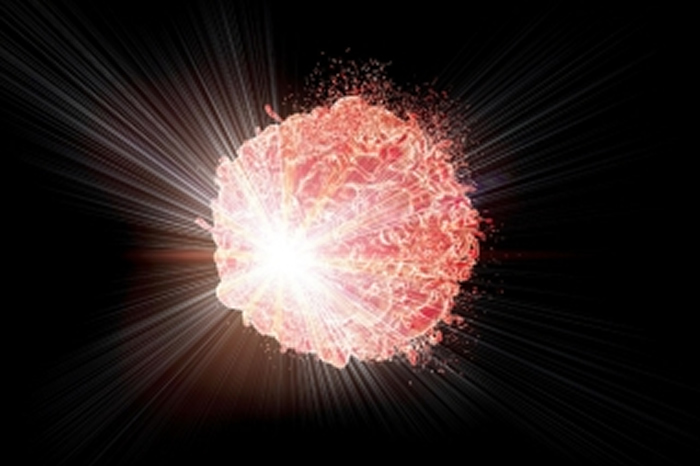
Hadron therapy, which relies on beams of charged particles including protons and heavier ions such as carbon, is expected to increase cancer cure rates because it can be used to treat larger tumors or those resistant to conventional radiotherapy.
Many cancer patients are familiar with radiation therapy, in which beams of electrons are used to kill cancer cells. But photon beams can also adversely affect neighboring normal tissue. This toxicity limits both the dose that can be delivered and the size of the tumor that can be treated effectively.
Now, Stanford Medicine and the Veterans Affairs Palo Alto Health Care System have announced a collaboration to establish the nation’s first center to deliver hadron therapy to cancer patients. Hadron therapy — which relies on beams of charged particles like protons, carbon, helium and other ions — is expected to increase cancer cure rates because it can treat multiple tumors or those resistant to conventional radiotherapy, while also limiting adverse side effects.
“Through our precision health vision, Stanford Medicine is committed to providing more personalized health care that is tailored to each individual,” said Lloyd Minor, MD, Dean of the Stanford School of Medicine. “Planning for the hadron center embodies this commitment, as we seek to identify optimal ways to offer targeted treatment that both reduces harm and promotes healing.”
The collaboration will be announced at an event today at the White House as part of Vice President Joseph Biden’s Cancer Moonshot initiative. At the event, the Vice President will share the Moonshot Committee’s report and highlight a few examples, including the proposed hadron center, that support the moonshot’s objectives.
Killing tumors with charged particles
Hadron therapy uses beams of charged particles like protons, carbon ions and other ions to kill tumor tissue. Unlike photons or electrons, which release energy along the length of their path, the charged particles deliver most of their damaging energy in one burst inside the tumor. They are more effective at damaging DNA inside of cancer cells, and some studies have suggested they can effectively incite an immune response against the tumor. Charged particle beams can also be shaped to treat tumors of various sizes and shapes. Hadron therapy represents a new way forward in cancer care.
There are about 10 carbon-based hadron therapy centers in the world, but none in the United States. The center is expected to be located on the grounds of the VA-Palo Alto. If all goes well, the collaborators hope to begin treating cancer patients in about four years.
“Hadron therapy represents a new way forward in cancer care,” said David Entwistle, President and CEO of Stanford Health Care. “Stanford Medicine is honored to collaborate with the VAPAHCS to bring this therapy to our patients, giving them unprecedented access to the latest cancer science and treatment.”
VA Secretary Robert McDonald said, “We are excited to further expand our current partnership with Stanford Medicine and explore ways to continue taking veterans’ health care into the 21st century. The state-of-the-art hadron center would not only improve the lives of those affected by cancer, but further demonstrate VA’s ability to partner on pioneering innovation and exceptional health care.”
Goal of improving survival rates
The technology could bring hope to patients suffering from currently incurable tumors.
“Currently it is not possible to effectively treat large-volume tumors or metastatic disease with conventional radiotherapy due to concerns about toxicity,” said Quynh Le, MD, Professor and Chair of radiation oncology at the School of Medicine and the Katharine Dexter McCormick & Stanley McCormick Memorial Professor. “I believe particle beam therapy will transform the care of cancer in this country. We will have the potential to cure patients with radio-resistant tumors. In addition, we hope to also use this approach to boost the survival and decrease the toxicity experienced by patients with large-volume metastatic disease. Our goal is to improve the survival of patients who are currently considered incurable.”
In addition to treating veterans, physicians at the center would also treat nonveterans and children with cancer.
“Lucile Packard Children’s Hospital and Stanford Medicine have long been at the vanguard of pediatric care and scientific discovery to improve the lives of children,” said Christopher Dawes, President and CEO of Lucile Packard Children’s Hospital Stanford and Stanford Children’s Health. “Planning for the hadron center, which provides proton and heavier charged particle therapy, is no exception. It will change the way we fight cancer and reduce late toxicity in pediatric and young adult patients.”
The center also will be used to conduct research and clinical trials to validate the potential of hadron therapy in cancer patients and to miniaturize the technology (in collaboration with the SLAC National Accelerator Laboratory) to make it more affordable and accessible for cancer patients around the world.
“We, at Stanford Medicine, have been working on this for several years and are thrilled that we will have the opportunity to work with the Palo Alto VA to bring the nation’s first hadron therapy system to Stanford,” said Sridhar Seshadri, Vice President for cancer services at Stanford Health Care. “We believe that Stanford Medicine has the innovative spirit and the expertise to refine, test and validate this technology for the benefit of our patients.”
More information: Stanford University School of Medicine


Comments are closed, but trackbacks and pingbacks are open.